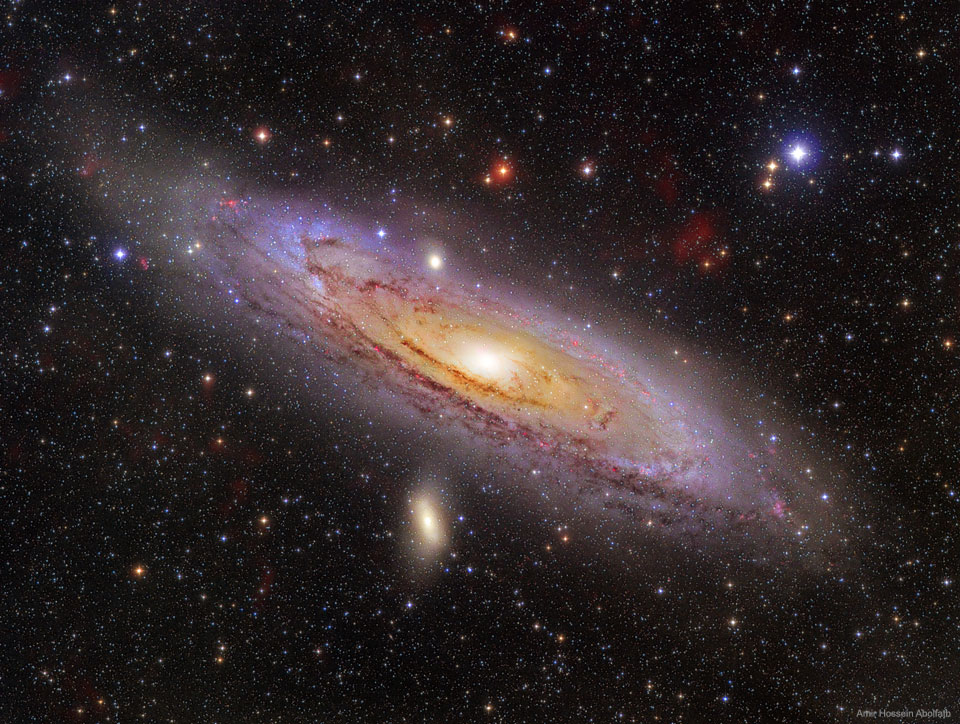2019 September 9
M31: The Andromeda Galaxy
Image Credit & Copyright: Amir H. Abolfath (TWAN)
Explanation: How far can you see? The most distant object easily visible to the unaided eye is M31, the great Andromeda Galaxy, over two million light-years away. Without a telescope, even this immense spiral galaxy appears as an unremarkable, faint, nebulous cloud in the constellation Andromeda. But a bright yellow nucleus, dark winding dust lanes, luminous blue spiral arms, and bright red emission nebulas are recorded in this stunning six-hour telescopic digital mosaic of our closest major galactic neighbor. While even casual skygazers are now inspired by the knowledge that there are many distant galaxies like M31, astronomers seriously debated this fundamental concept only 100 years ago. Were these “spiral nebulae” simply outlying gas clouds in our own Milky Way Galaxy or were they “island universes” — distant galaxies of stars comparable to the Milky Way itself? This question was central to the famous Shapley-Curtis debate of 1920, which was later resolved by observations favoring Andromeda being just like our Milky Way Galaxy — a conclusion making the rest of the universe much more vast than many had ever imagined.
M31:仙女座星系
影像版权与提供: Amir H. Abolfath (TWAN)
说明: 你能看多远?人类肉眼能轻易见到的最远天体是M31 (仙女座星系),离我们超过二百万光年远。不过,如没借助于望远镜,这个庞大螺旋星系,看起来只是仙女座的一团不起眼黯淡的弥漫云气。作为对比,在这幅以这个最邻近大型星系邻居为主题的6小时长曝光望远镜组合影像里,星系明亮的泛黄核心、蜿蜒黝黑的尘埃带、泛蓝的螺旋臂、与泛红的发射星云皆历历在目。透过窄滤镜所拍摄的影像数据,除了记录了来自氢原子的辐射,也突显了妆点在壮丽螺旋臂上的红色恒星形成区和年轻星团。虽然现在连一般的观星人,都知道天空中有许多像M31这种遥远的星系,但是近在100年前,天文学家还很正式的争辩过这个基本观念:这些”螺旋星云”是我们银河系的外围结构?或者它们是宇宙岛 — 宇宙它处类似我们银河系的天体?这个问题是著名的1920年Shapley-Curtis大辩论之中心议题,观测后来排解了这个争论,指出M31是个位阶与我们银河系相当的天体,而整个宇宙也远大于我们所想的。







